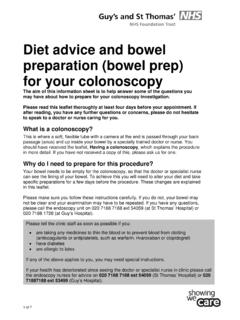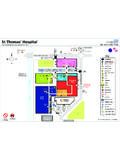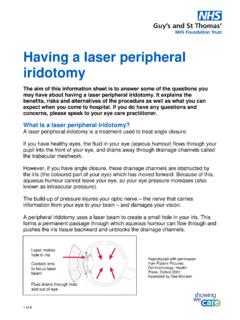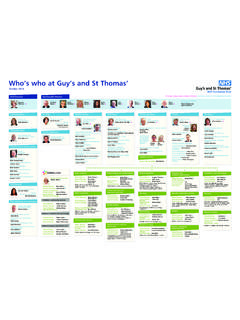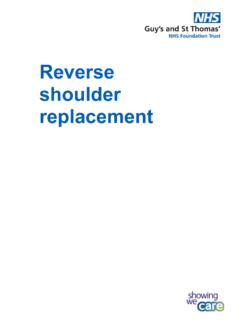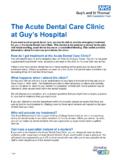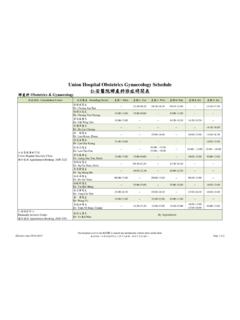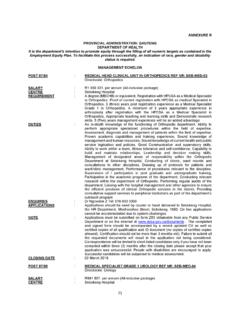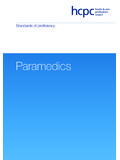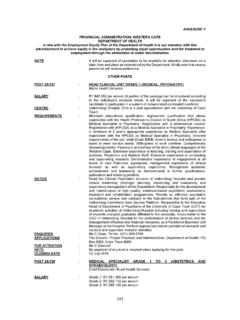Transcription of Adenomyosis - Guy's and St Thomas
1 1 of 4 Adenomyosis This leaflet explains about Adenomyosis . If you have any questions, please speak to a member of staff caring for you. What is Adenomyosis and why do I have it? Adenomyosis is a condition where the cells of the lining of the womb (endometrium) are found in the muscle wall of the womb (myometrium). Around one in 10 women will have Adenomyosis . It can occur in any woman who still has periods but is most common in women aged 40-50 and in women who have had children. It cannot be spread between people and it is not cancerous. We do not know exactly why Adenomyosis happens. One theory is that in certain conditions when the lining of the womb tries to heal itself after injury, this re-growth happens inwards instead of outwards, resulting in Adenomyosis . It is likely that your genes, hormones and immune system may play a part as well. It is no one s fault if Adenomyosis occurs, and there are no known ways to prevent it.
2 What are the signs and symptoms? The most common symptoms are: heavy, painful or irregular periods pre-menstrual pelvic pain and feelings of heaviness/discomfort in the pelvis. Less common symptoms are: pain during sexual intercourse pain related to bowel movements. Around one third of women will not have any symptoms. Adenomyosis may just have been found coincidentally on a scan, for example. It is a long-term condition and can affect many areas of a woman s life, including emotional wellbeing, relationships and daily routines. Any symptoms will stop when you have the menopause. Adenomyosis does not seem to decrease the chance of getting pregnant, but it may increase the risk of miscarriage or having a premature baby. Do I need any tests to confirm the diagnosis? It can take a long time (years even) to get a diagnosis. This is because: women may have different symptoms symptoms of pelvic pain can be caused by many other conditions (for example, pelvic inflammatory disease or irritable bowel syndrome) some women have no symptoms at all.
3 Unfortunately this means that for many women, by the time they receive the diagnosis they may be starting to give up on getting the right help. In at least half of cases, Adenomyosis can be detected by an internal transvaginal ultrasound scan. A probe is inserted into the vagina and images (created using high-frequency sound waves) are transmitted to a monitor. If an ultrasound scan does not clearly show if you have Adenomyosis , it may be necessary to have a magnetic resonance imaging (MRI) scan. This scan uses magnets and radio waves to produce a picture of the inside of your body. If the doctor thinks you should have a scan to help diagnose Adenomyosis , you will be given more information about what to expect and how to prepare for the scan. What treatments are available? Difficulty diagnosing this condition has made it difficult to develop treatments, many of which address symptoms rather than the underlying cause.
4 Before making a decision about treatment, you should be given full information about all the options including risks and benefits of each. Several factors may influence your decision-making, such as: your age and how close you are to having the menopause whether you want to become pregnant treatments you have already tried how you feel about surgery. Depending on your situation, options could be: doing nothing if your symptoms are mild, you are trying for a baby, or you are nearing menopause (when symptoms tend to stop) non-hormonal medicines (for example, tranexamic acid and mefanamic acid) to help reduce pain and bleeding with your period (for more details, see our leaflet on Heavy menstrual bleeding). hormonal medicines this can include the combined oral contraceptive pill, progestogen-only pill or the intra uterine system (the IUS/hormonal coil, Mirena) injections of hormones to make a false menopause GnRh agonist injections shrink the womb lining by causing a temporary and reversible menopause, but cannot be used long term hysterectomy (surgery to remove the womb) can be an effective option for women who do not want to become pregnant it should not be necessary to remove your ovaries (unless you also have endometriosis) so you should not enter menopause after the hysterectomy.
5 Uterine artery embolisation tiny particles are injected into your blood vessels through a catheter in the groin. The particles aim to cut off the blood supply to the Adenomyosis . This is less invasive than surgery and may help preserve fertility. It is likely to improve symptoms for a couple of years. Symptoms may recur in the future, however. Sometimes treatments for another condition (for example, fibroids) have been found to improve symptoms of Adenomyosis . However, these treatments (for example, endometrial ablation and surgical excision during myomectomy) are not advised for the treatment of Adenomyosis only. This is because they reduce the bleeding, but not the pain. 2 of 4 What happens if I do not receive treatment? If you do not have any treatment the condition will stay the same. In some women the pain will get worse but it will stop after the menopause. Is there anything I can do to help myself?
6 Complementary therapies such as yoga, meditation, and gentle exercise may help with painful periods. Some women find that changing their diet is helpful. Others report that TENS (transcutaneous electrical nerve stimulation) machines are helpful. You should speak to a health professional before using a TENS machine. More research is needed on how effective these strategies are. Useful sources of information Some women will have difficulty finding a treatment option that works for or suits their situation. Internet forums may be the first place you turn to for support, but the unregulated information needs to be interpreted with caution. The following organisations may be able to offer support: Adenomyosis Advice Association w: Pelvic Pain Support Network w: : Hysterectomy Association w: : 8U Contact us If you have any questions or concerns about Adenomyosis , please contact the gynaecology helpline on 020 7188 3023 (Wednesdays, 2-4pm) or email Alternatively, please contact your GP or practice nurse.
7 For more information leaflets on conditions, procedures, treatments and services offered at our hospitals, please visit Pharmacy Medicines Helpline If you have any questions or concerns about your medicines, please speak to the staff caring for you or call our helpline. t: 020 7188 8748 9am to 5pm, Monday to Friday Your comments and concerns For advice, support or to raise a concern, contact our Patient Advice and Liaison Service (PALS). To make a complaint, contact the complaints department. t: 020 7188 8801 (PALS) e: t: 020 7188 3514 (complaints) e: 3 of 4 Language and Accessible Support Services If you need an interpreter or information about your care in a different language or format, please get in touch: t: 020 7188 8815 e: NHS 111 Offers medical help and advice from fully trained advisers supported by experienced nurses and paramedics. Available over the phone 24 hours a day.
8 T: 111 NHS Choices Provides online information and guidance on all aspects of health and healthcare, to help you make choices about your health. w: Get involved and have your say: become a member of the Trust Members of Guy s and St Thomas NHS Foundation Trust contribute to the organisation on a voluntary basis. We count on them for feedback, local knowledge and support. Membership is free and it is up to you how much you get involved. To find out more, and to become a member: t: 0800 731 0319 e: w: Leaflet number: 4337/VER1 Date published: January 2017 Review date: January 2020 2017 Guy s and St Thomas NHS Foundation Trust 4 of 4
